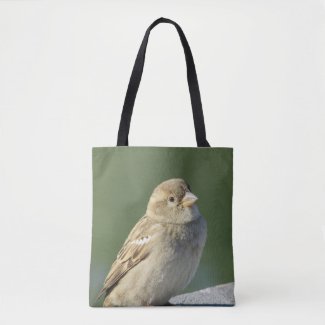Sparrows Foodies of the Bird World
By early July the jujubes are beginning to ripen and the house sparrows come from all corners of my neighborhood. My jujube trees are fairly tall so I leave the high ones for the birds and enjoy watching the adult and young sparrows eat and battle for the choicest of fruits. They will flap and hop from branch to branch, eating upside down when needed to nibble on the fruit that looks the tastiest. I have not yet discovered a commonality about the fruit sparrows eat. Seems like each bird has its own personality and taste about what looks delicious.
They do feast in the trees but they are also experts at knocking them down and then eating them on the ground. Walking under the trees when there are many feeding is a good way to be showered with fruit. Thankfully the little sparrows have not yet perfected their aim but I have a feeling that they are working on it. Once on the ground, the sparrows can then pin the fruit to the ground with their foot and peck away. The ground however is where they seem to get very territorial and picky about what they are eating. The male in the photo was guarding two and at one point tried to drag them away so that he could feast on his double portion. There might be five or six jujubes that have been dropped and several sparrows will argue and try to steal one fruit as another sparrow happily snacks on a different one in peace.
Endless entertainment in my own backyard when I am able to sit and observe with my camera in hand. I occasionally capture a great photo of these super active little guys like the one below who posed for me long enough to snap a photo to adorn one of our store products. I assume that the birds notice me watching them in the yard, as animals are very smart. At this point in the summer though they see food and seem eager to tolerate me in order to feast.
The below link contains an affiliate link for which we earn a referral.





Comments